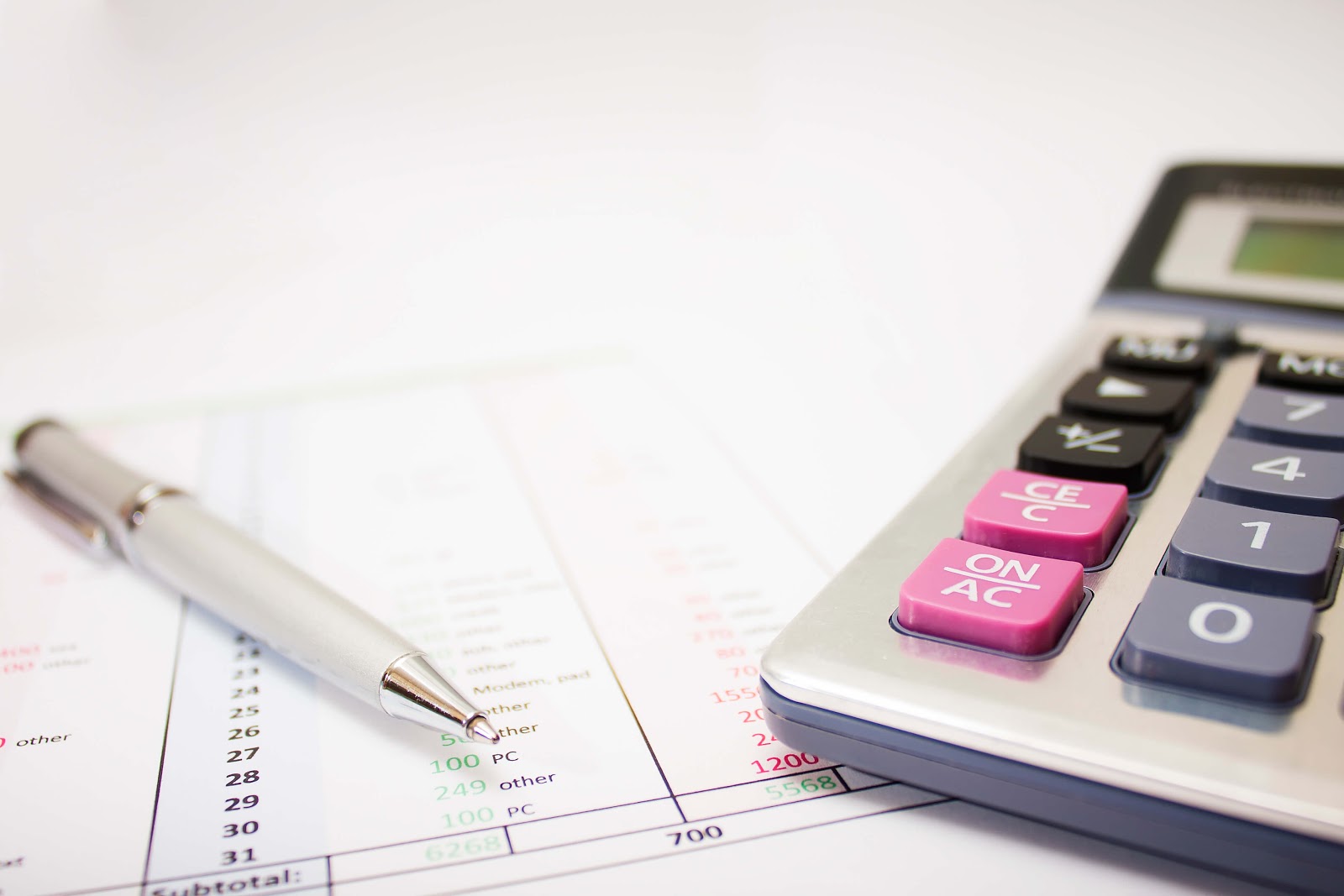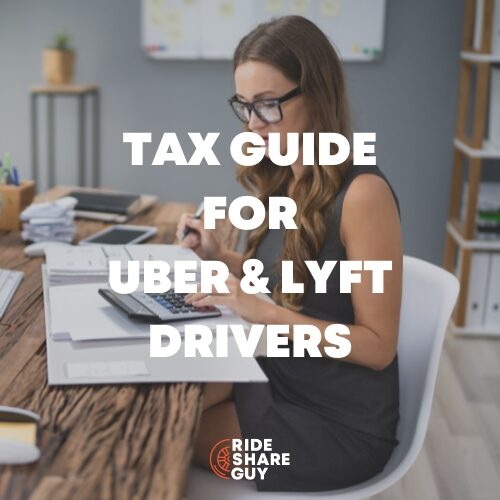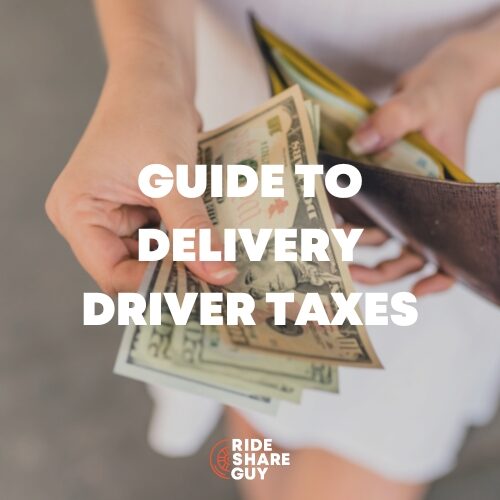Good news! The Employee Retention Credit that we discussed late last year has been extended, improved, and increased for 2021! This year you can earn a credit of $7,000 for Quarters 1 and 2 of 2021! And you may even be able to claim it retroactively for 2020 if you didn’t make the cut off for last year. That’s $19,000 in potential credits for eligible gig workers.
Our partner COS Accounting will help you with everything you need in order to qualify for the ERC, if you’re ready to sign up with them and see if you qualify for the credit, please click here.
Quick summary:
- The Employee Retention Credit (ERC) has been increased for 2021 – you can get a total credit for up to $14,000 this year (Q1 & Q2)
- In order to qualify for the maximum credit for Q1, you will want to make sure you earn at least $10,000.
- COS Accounting can help you through this process, including setting up an LLC as S-Corp and filing for the ERC
- Taking unemployment does not automatically disqualify you from receiving the tax credit, unless you took it for more than 4 weeks in one quarter
- Drivers in all states can qualify for the ERC if they were affected by the pandemic
What is the Employee Retention Credit (ERC)?
The Employee Retention Credit (ERC) is a tax credit designed to help small businesses recover from the impacts of Covid-19 on their business. The ERC is NOT a loan, it is a tax credit, meaning that it does not have to be repaid.
How Much Can I Claim with the Employee Retention Credit in 2021?

The first version of the Employee Retention Credit in 2020 paid out 50% of an employee’s income up to $5,000. So if you earned $10,000 or more in income in 2020, you would get 50% of up to $10,000 for a maximum credit of $5,000.
For 2021, the ERC pays out 70% of an employee’s income, up to $7,000 for both Q1 and Q2.
Say you have made $8,000 in the 1st Quarter: You can claim $5,600 for the ERC. If you made $10,000, you can claim the maximum $7,000. If you make over $10,000, your credit is still limited to the $7,000. So if you’re reading this right now, you’ll want to make sure you earn at least $10,000 to qualify for the maximum amount.
The ERC is paid out per employee. For those who have a spouse and children, there are additional credits that can increase the refund amount if certain criteria are met. I was actually able to get a $19,000 credit last year because of my family.
This will be explained more below.
How Can I Claim the ERC?: Employee Retention Credit Changes
The first thing you need to do is set up a Limited Liability Corporation (LLC) that files as an S-Corp. The ERC is designed for small business owners, so by setting up your own LLC and running it as an S-Corp, you now are an employee of your own business. This enables you to qualify for the ERC. For those that already have an LLC, you would still need to elect to file as an S-Corp.
Here’s how you calculate the Employee Retention Credit: You can then count all of your 1099 earnings (driving, delivery, or any other side gig/1099 work) as earnings towards your business for the earnings you made while you were impacted by the pandemic.
Once you set up your own LLC, the process is easy. COS Accounting has a team that walks you through the qualification process, will set up the LLC, file your forms for you, and can give you an estimate on the phone of how much money you can claim. COS knows the ERC inside and out, and will make sure to help you claim as much as you can. Here’s an interview we did with their CEO, Mason Warr:
When we first heard about this offer, it honestly sounded too good to be true, but it’s one of the provisions that was buried deep in the CARES Act, and not many people or tax firms know about it. COS has already helped hundreds of RSG readers claim this credit (and thousands overall), so they know what they are doing.
If you would like to try to claim the ERC credit yourself, you will still need to set up an LLC (processes, fees and taxes vary by state), track and detail your income for the year, file your quarterly taxes for your business, and file, sign, and attach a 941 Form. Once you send that to the IRS, they may take a few weeks to process and get back to you regarding errors that you will need to fix.
We don’t recommend the do it yourself approach here since you want to make sure you get it right on the first time and get your paperwork in ASAP, so using COS will be the best choice for most drivers. Plus when you’re getting free money, it’s not a big deal to pay someone that’s an expert like COS to help.
You can sign up with COS here and see if you qualify.
How Do I Know if I Qualify?
The IRS will be looking at a few key factors to make sure you qualify for the ERC, and these can include:
- Was your job impacted by COVID? This can include local governmental restrictions, earning less this year than last year, or disrupted operations (keeping 6 feet from clients).
- How many weeks worth of unemployment you took. Taking unemployment does not automatically disqualify you from receiving the tax credit, unless you received more than 4 weeks of unemployment in a quarter.
- How much have you made this year? Despite what you might think, the more you have made, the better. As stated above, this credit will pay out up to $7,000 if you have made $10,000 or more, per quarter. So try to keep track of all the 1099 income you have made this year.
For existing clients that signed up with COS last year, you will receive an email from them in the second week of March about applying for the ERC 2021 for the first quarter. You can also reach out to them directly with any questions. Hundreds of RSG readers reached out to COS last year about the ERC and were able to qualify and take advantage of this credit.
Claiming the ERC for Q1 2021
In order to qualify for the ERC, the first thing you need to do is make some money from gig work! We know some people are sitting out on the sidelines right now but if you want to go for the ERC, we recommend trying to make at least $10,000 each quarter (roughly $3,333 per month), to qualify for the full $7,000 credit each quarter.
It’s basically a bonus of 70 cents on the dollar for your first $10,000 in income, which is pretty amazing!
In order to claim the ERC for Q1 (January through March), it will make the process much smoother if you have an S-CORP set up before March, but is not required. COS will have to file a quarterly for you, and on that quarterly they will claim the ERC tax credit.
While last year you could only claim the ERC once, now you can claim it twice. Once for Q1 (JAN-MAR) & once for Q2 (APR-JUNE).
Drivers that claimed the ERC in 2020 can also still claim the ERC for Q1 and Q2 of 2021.
Employee Retention Credit for the Self Employed: My Experience with COS Accounting
Back in November of 2020, I filled out the qualifier form on a Sunday and was contacted the next day via phone. The initial conversation lasted about 30 minutes, and they were able to determine that both my wife and I (she is an Independent Contractor as well) would qualify for a total credit of $10,000. During the call, we also determined that it would make the most sense for my wife and me to set up a joint LLC as an S Corporation.
You have to set up your LLC as an S-Corp in order to qualify for the ERC, but the S-Corp will also end up saving us in taxes anyway.
Now, I also mentioned that we have 2 daughters, and this qualified us for an additional $6,000. And we received an additional $3,000 for business taxes bringing the total credit to $19,000! Our heads were spinning! After taxes and COS’s fee, we’re going to be ahead $13,300 – incredible.
We chose to let COS handle everything, from the creation of the LLC as an S Corp to applying for the ERC. They submitted the initial LLC filing paperwork and 2 days later it was approved.
The following business day they submitted the ERC paperwork, and now we just wait for the check to arrive. It was a completely painless process, COS did all the heavy lifting, I can’t recommend working with them enough.
2021 UPDATE:
We haven’t received our credit from the first go round with the ERC yet but that’s all right. We received an update that the IRS has received our ERC but it has not been processed yet (so apply sooner rather than later!).
My wife and I plan on applying for the ERC in both the 1st and 2nd quarters.
Our experience with COS has been great; they just filed our 2020 4th Quarter business taxes, and we are now in the process of preparing to file our 2020 personal taxes. Their communication has been great, I have spoken with multiple people and they have answered all of our questions. I still highly recommend using them.
Why an S-Corp?
An S-CORP pays you as a W2 employee. You have to be a W2 employee to claim the ERC. Just being an LLC technically won’t qualify, unless the employees are paid on a W2. An S-Corp also requires filing quarterly taxes, while a typical LLC doesn’t. COS will file for the ERC with your quarterly tax returns.
As they have mentioned before, an S-CORP is the right strategy for 1099 contractors, regardless of the ERC. Anyone making at least $7,000 a year through 1099 work should consider setting up an S-Corp.
ERC vs Unemployment
In order to claim the ERC, you cannot claim more than 4 weeks of unemployment through the quarter (3 month period). However, unemployment MIGHT be more beneficial for many drivers.
Let’s say you are making $400 a week on unemployment. That would add up to $4,800 through Q1. The MAX they can claim for the ERC is $7,000, but that doesn’t include the SCORP set up cost (at least $300), the COS processing fee (roughly $500), or the taxes that will be deducted (about $1,000). You also need to consider that the ERC can take 4 months or longer to arrive, while unemployment is there every week.
COS learned through the 1st round of filing for the ERC last year that continuing on unemployment might actually be the more beneficial route for many drivers. But personally, I would rather work and earn $10,000 per quarter plus a $7,000 credit on top of that for a total of $17,000 per quarter.
Employee Retention Credit vs PPP
The Paycheck Protection Program (PPP) is from the Small Business Administration and is designed to help businesses keep their workforce employed during the coronavirus/COVID-19 crisis.
The maximum amount of money you can borrow as a first-time PPP borrower is 2.5 times your average monthly payroll costs, up to a maximum of $10 million.
The Employee Retention Credit (ERC) is a tax credit designed to help you if you were impacted by the coronavirus/COVID-19 crisis. There is a cap of $7,000 you can claim for the ERC.
You CAN claim the PPP and the ERC with the new stimulus package! However, you can’t use the PPP to pay yourself in wages, and use those wages to qualify you for the ERC.
Does the Employee Retention Credit Have to Be Repaid?
No, it does not. It is a tax credit and therefore the Employee Retention Credit does not need to be repaid.
How Much Does COS Accounting Charge?
COS rates range from $500 to $2,500, depending on each situation. According to COS, the majority of clients fall into the $500-$1,000 range.
To be clear: You aren’t charged anything unless you qualify for the tax credit, so there is no risk on your end to at least check!
If you are a single driver who has made $10,000 or more, and the process is fairly simple, their rate would be $500 from the $7,000 you earn. You will also need to pay the cost of the LLC set up (varies by state, Utah for example, is $300) and your Q4 taxes ($55 in my case, the cost of filing our quarterly taxes).
The credit will come pre-taxed, so the check you will receive will be for about $5,500 minus their fee (aka $5,000 of free money!).
COS normally requires clients to pay their fee and the filing fees up front but we have negotiated special financing plans to spread out the payments if desired. You can reach out to COS to learn more and see if you qualify.
Alternatively, you can also consider a short term loan from a reputable company like Credible. The potential savings more than outweigh the costs as we shared below:
Frequently Asked Questions: Employee Retention Credit FAQ
How many weeks of collecting unemployment would disqualify someone from the ERC?
If you collect more than 4 weeks of unemployment in either Q1 or Q2 you would be disqualified. If you collected 1-4 weeks then it would be based on a case-by-case basis.
What about drivers in California (CA)?
Drivers in CA qualify for this credit but there is an additional annual franchise tax fee of $800 for LLCs that must be paid every year. So in order to qualify for the credit, you would need to pay this additional tax plus the cost to set up an LLC in California. So it’s definitely still worth it but your credit will be less because of this fee.
It’s important to note that if you want to get rid of your LLC in the future, you can’t just stop paying the fee. You need to cancel it with the state of California.
What does an LLC provide?
LLC stands for Limited Liability Corporation. In the context of a driver/gig worker, its main benefit is liability protection since taxes for LLCs are treated as pass-through to your personal taxes. There is no tax benefit of setting up an LLC, but you could receive liability protection if a passenger were to sue you.
What is an LLC as S Corporation?
The biggest benefit of registering your LLC as an S-Corporation is the tax savings. All your earnings flow through your entity rather than the individual.
What are the risks or potential downsides?
If you’re worried about this fund running out of money, don’t be – it’s very unlikely. Also, hundreds of clients of COS Accounting have already received their money – there’s no catch to this!
If you file as an LLC, you will have to file quarterly taxes, but you can cancel your LLC once you get the check if you no longer are operating the business anymore.
More Commonly Asked Questions About the ERC
Why do I need an LLC?
The Employee Retention Credit is designed for small businesses, so you have to have an LLC to qualify for the ERC. An LLC is also a great idea for gig workers, because of the extra liability protection it offers. If for some reason, you were sued, an LLC will help to protect your personal assets. If you are working as a 1099 contractor, it is a smart idea to look into starting an LLC.
What’s the difference between an LLC & SCORP?
There isn’t a huge difference. In fact, an SCORP is a type of LLC. If you already have an LLC, changing it to an SCORP only changes how it’s taxed, it won’t change your EIN number or business name. S corporations have better self-employment taxes compared to an LLC because the owner can be treated as an employee and paid what’s called a “reasonable salary”. This salary you pay yourself through an SCORP is what qualifies you for the ERC.
What’s the annual cost for upkeep for an SCORP?
Annual upkeep for an SCORP is minimal, especially relative to the tax savings you will see. You will need to pay quarterly taxes ($55 each quarter through COS Accounting), as well as your annual taxes (both personal and business) and depending on which state you live in, a small LLC renewal fee. While it may sound you are paying more in taxes through an SCORP, you really are paying less, just more often. The average COS client sees about $2,500 in tax savings each year by switching to an SCORP.
How does unemployment impact my ERC eligibility?
Because the ERC is an *employee* retention credit, taking unemployment can disqualify you. The IRS will see you claiming an employee credit, while also taking unemployment, and consider it double-dipping, which is frowned upon.
Can I still claim the ERC if I took unemployment?
There are still ways to claim the ERC if you took unemployment. If you have taken unemployment 4 weeks or less in each quarter (so 1 month out of every 3), it is still possible to claim the credit in that quarter. We suggest talking to one of COS’s accountants and they will make sure you qualify before moving forward.
What if I received an EIDL or PPP loan?
You CAN claim the PPP and the ERC with the new stimulus package! However, you can’t use the PPP to pay yourself in wages, and use those wages to qualify you for the ERC.
For example, if you got a PPP for $6,000 and used all $6000 to pay yourself a wage of $10,000, COS Accounting can only use the remaining $4,000 to qualify you for the ERC. Then it would be 50% of that, so $2,000. In short, you can get the PPP and the ERC but depending on what you used the PPP loan towards might affect how much ERC you can qualify for.
How long until the check gets to me?
What we have seen is that the IRS takes about 12-16 weeks to send the check after the date of file. This means if we file your ERC with Q1 (April), your check will most likely come in August. COS has no control of when the check comes, but you can call the IRS directly to get an update.
The filing date for the Q1 ERC is April 1st until April 30th.
In addition, COS Accounting can check on the status of your check 4 weeks after it’s been submitted.
Will the charge come out of my check?
No. COS will not see, or touch your check at all after they have filed for your ERC. Your check will come via MAIL, to the address you provide. COS offers payment plans for those that do not want to pay their total fee upfront.
Why is my ERC lower than expected?
The amount you qualify for is based on the income you have earned each quarter. So while the max a person can claim is $7,000, that isn’t the norm. The check also comes already taxed, so even if you qualify for the full $7,000, the number on the check will be closer to $5,600. There are additional credits COS will try to help you qualify for (sick time, parental leave, etc), but those are a case by case basis and cannot be guaranteed for each customer.
How do we know COS Accounting is credible?
COS has been around for 2 years now, and have been helping their clients claim the ERC since the credit was announced earlier this year. You can see COS as an IRS approved provider on the IRS website here: https://www.irs.gov/efile-index-taxpayer-search?zip=84604&state=49
And you can read about the ERC on the IRS Website here: https://www.irs.gov/coronavirus/employee-retention-credit
Does COS have to do my taxes?
No, they do not. However, by starting an LLC SCORP, you will have to do business taxes, including quarterlies due every 4 months. COS Accounting is happy to provide this service for you for $55 each quarter, especially because they have already done work with the ERC, so they have all your needed documentation, making the process easy as possible for you. If you would like to find another service provider, that works just fine!
Ready to get started? You can sign up with COS Accounting to see if you qualify for the ERC here.
Do you have more questions about the ERC? Let us know in the comments below!
-Joe @ RSG




